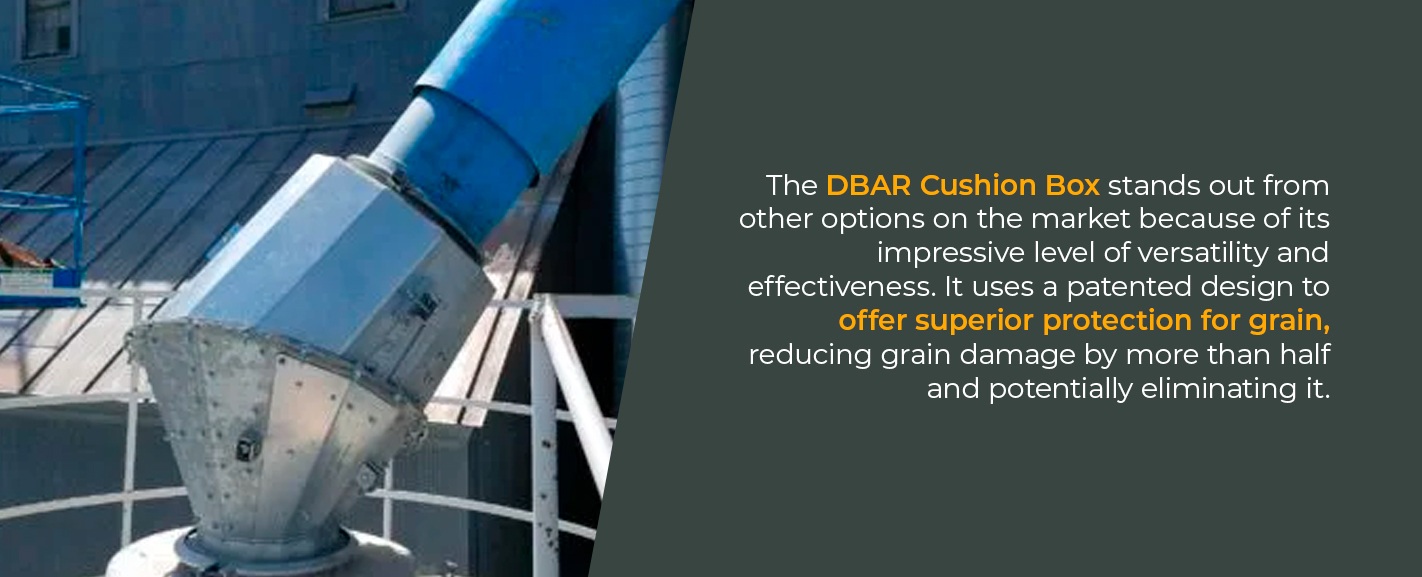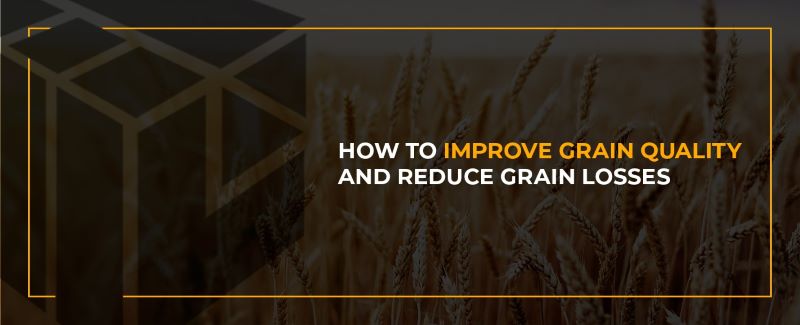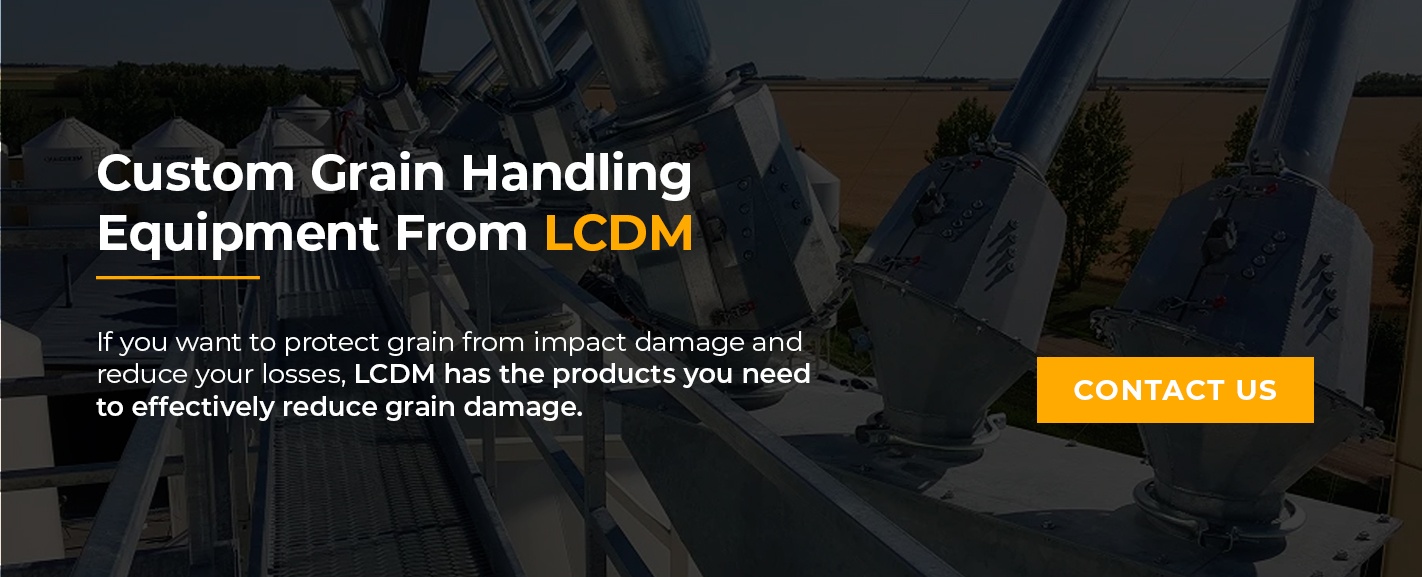A beautiful crop of grain, threshed to perfection, won’t necessarily mean a high-quality grain product. Issues can occur during grain handling and storage that adversely affect its condition and lead to expensive losses. Fortunately, however, there are proven methods of minimizing grain losses and improving the quality of your grain. We’re going to focus on one of the most effective tools you can use to accomplish this goal: a grain cushion.
Issues That Can Affect Grain Quality
Several problems can damage grain after harvesting and threshing. A few of the most significant issues that can crop up during grain handling or storage include the following.
- Pest damage: With improper storage, grain can be susceptible to damage from pests like rodents and insects. Pests can feed on grain, leading to significant losses, or can contaminate the grain, decreasing the quality.
- Mold and fungus: Excessive moisture during storage can lead to mold and fungus contaminating and damaging the grain. Even after drying, moisture rebound can occur, resulting in a moisture level that is too high.
- Overdrying: Though drying grain is crucial for avoiding moisture problems, you also risk overdrying. Overdried grain can result in shrinkage. Another possible issue is that overdrying from excessively hot machinery cause stress fractures in the grain.
- Breakage from handling: As workers handle and move grain for storage, it can break, especially if they aren’t careful. Split or fractured kernels will have a lower market value, making this a costly problem for people using improper grain handling practices or equipment.
Why Grain Breakage Occurs
As we saw above, some issues with grain handling can lead to breakage. In general, two types of impact can cause grain breakage to occur.
- Grain-on-grain impact: One of the main ways grain breakage can occur is through grain-on-grain impact, such as during free fall into a storage container, especially when spouts aren’t running at full capacity. Kernels can collide with each other, resulting in stress fractures.
- Surface impact: Grain can also break when it hits various surfaces, whether it be the bottom of a concrete bin floor or on equipment like augers, which are abrasive and cause damage to grain. The proper equipment and liner should minimize surface impact and grain damage.
However the breakage occurs, damaged kernels will get downgraded to a lower market value, which can be a costly problem for farmers. The good news is that this is preventable. Worn or inadequate equipment exaggerates both types of impact above. A study of grain storage in developing countries revealed that faulty technology can result in as much as 50 to 60% losses of cereal grains during storage. Implementing scientific storage methods could lower these percentages to as low as 1 to 2%.
High-quality grain handling equipment, paired with proper grain handling procedures, is a must for preventing the impacts that cause mechanical damage. It’s wise to limit the number of times you handle grain, but when moving it is necessary, you want equipment that will help protect the integrity of the grain kernels, rather than contribute to damage.

Use a DBAR Cushion Box to Improve Grain Quality
How can you stop grain from breaking? An excellent tool for helping reduce grain breakage is a Dead Box Adjustable Round (DBAR) Cushion Box. A cushion box for grain is a device that slows grain’s movement at the endpoint of spouting to minimize the impact on the fragile kernels.
The DBAR Cushion Box stands out from other options on the market because of its impressive level of versatility and effectiveness. It uses a patented design to offer superior protection for grain, reducing grain damage by more than half and potentially eliminating it.
How does it do this? One secret to the DBAR Cushion Box’s effectiveness is the internal cone with an adjustable baffle. Fine-tuning the baffle to your specifications allows you to create the ideal level of cushion for your grain. You can even collect and cushion grain effectively when the spouts are running at partial capacity. These qualities distinguish the DBAR from most other cushion boxes on the market, whose design only allows them to provide cushioning at full capacity.
The results of its unique design are a consistent pocket of grain and, ultimately, a higher-quality grain product with far fewer splits and cracks.
Some other features that make the DBAR Cushion Box an ideal investment for your business include the following.
- Long service life: Any time you invest in equipment, you want to know if you can count on it to last long enough to give you a positive return on your investment. The DBAR Cushion Box’s design allows it to last in any environment, with an 8-gauge body and hot-dip galvanized finish. You can also replace inner components when they wear out, so you can continue using the same cushion box for a long time.
- Liner options: The DBAR Cushion Box is compatible with a variety of liners, including different types of urethane liners, which provide more effective wear resistance and protection than ceramic coating or abrasion-resistant steel liners.
- Size options: You can also choose from various stock sizes for your DBAR Cushion Box, ranging from 8 to 20 inches.
- Easy cleaning: When you need to remove foreign objects or debris or otherwise clean your cushion box, it’s a snap to do so. Two oversized service doors make the interior of the DBAR Cushion Box easily accessible.
- Simple installation: Installing the DBAR Cushion Box is a relatively quick process. Part of what simplifies the installation process is that you don’t need to use flow retarders in the middle of your spouts. This streamlined setup makes the millwright’s job easier.
Custom Grain Handling Equipment From LCDM
If you want to protect grain from impact damage and reduce your losses, LCDM has the products you need to effectively reduce grain damage. Our patented DBAR Cushion Box isn’t the only product we provide to improve your grain quality and your operations.
At LCDM, we recognize that every grain-handling operation has unique needs, so we also offer custom designs. Our design professionals can create a fully functional product tailored to your specifications. We can also help you improve your efficiency and productivity, and provide whatever technical support you need to succeed during your project. If you have questions about how LCDM can help you improve grain quality and your operations, contact us today.


